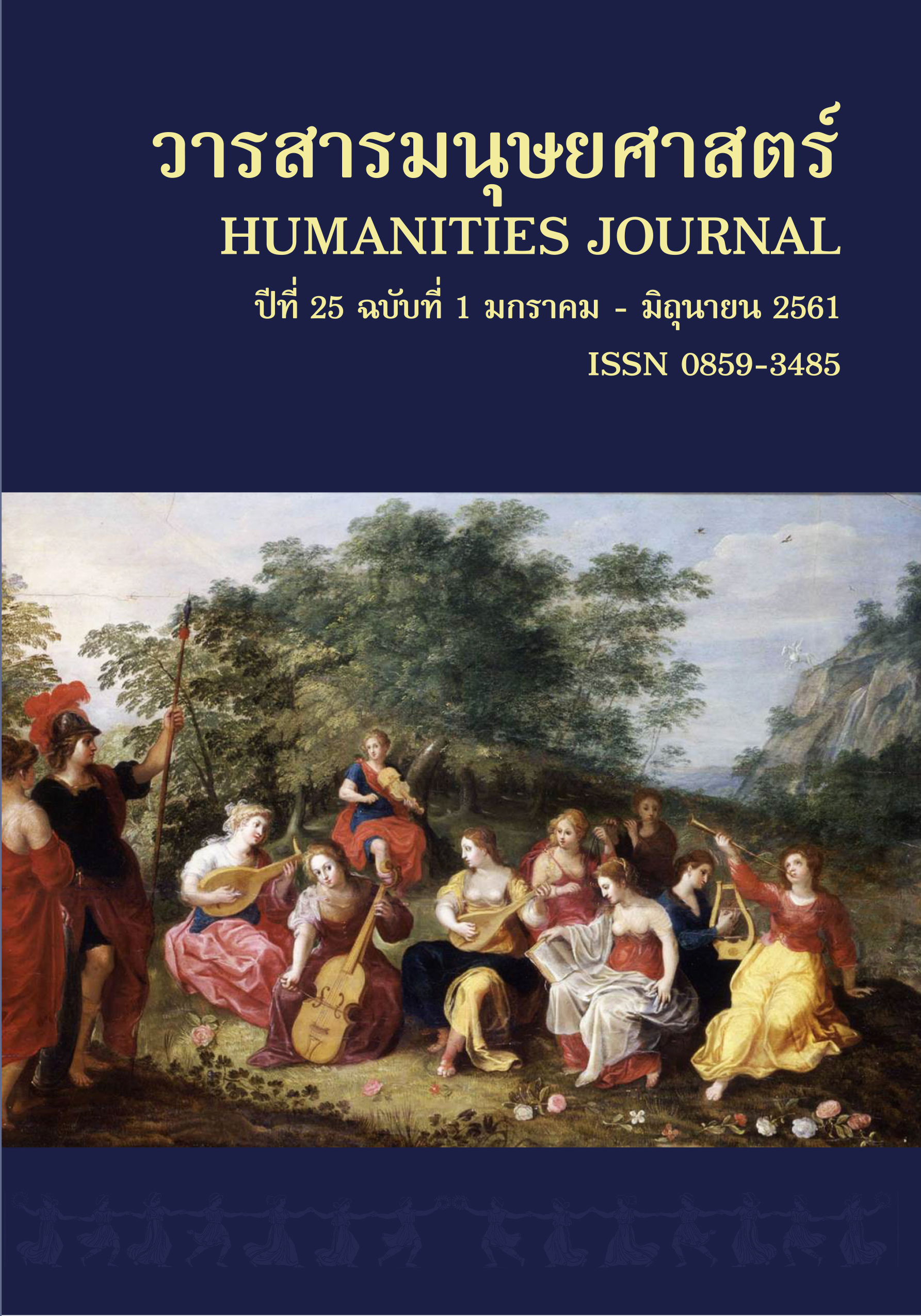การเปลี่ยนแปลงของภาษาไทยถิ่นภูเก็ตปัจจุบันผ่านการสัมผัสภาษาถิ่น
Main Article Content
Abstract
This research aimed at analyzing the dialect contact phenomenon in Phuket Thai. The linguistic variables consist of 36 lexical items and two phonological variables: final glottal stop (Ɂ) in long checked syllables and the vowels (ei, əɨ, ou) in open syllables. The data were collected from 120 informants in Phuket province. They were classified into four groups according to their ancestors’ birthplaces: Phuket, Southern Thailand where Eastern Southern Thai is spoken, Southern Thailand where Western Southern Thai is spoken and Central Thailand. Each of these groups was divided into three age groups: over 60 years old, 35-45 years old and 10-20 years old, and, ten informants were selected from each of the three age groups. The informants (four birthplaces x three age groups x 10 persons) were interviewed to obtain informal speech. The result showed that the elderly group (the over 60-year-old group) mostly used the linguistic variants in their ancestors’ dialects. The middle-aged group (the 35-45 year-old group) used a variety of linguistic variants while the young group (the 10-20 year-old group) mostly used the Standard Thai variants. It may be thus concluded that present day Present Day Phuket Thai is tending to converge with Standard Thai.
Article Details
References
ชมพูนุท พุ่มท่าอิฐ. (2534). ความสัมพันธ์ระหว่างการย้ายถิ่นและการเลื่อนฐานะทางสังคมของประชาชนในจังหวัดภูเก็ต อันเป็นผลมาจากการพัฒนาการท่องเที่ยว (วิทยานิพนธ์มหาบัณฑิต สาขาวิทยาศาสตร์สิ่งแวดล้อม). มหาวิทยาลัยเกษตรศาสตร์, กรุงเทพฯ.
ฌัลลิกา มหาพูนทอง. (2539). การกำหนดแนวแบ่งเขตภาษาไทยถิ่นตะวันออกกับภาษาไทยถิ่นใต้ตะวันตก โดยใช้พยางค์ที่มีสระเสียงยาวกับพยัญชนะท้าย /k/ หรือ /ʔ/ (วิทยานิพนธ์มหาบัณฑิต สาขาภาษาศาสตร์). จุฬาลงกรณ์มหาวิทยาลัย, กรุงเทพฯ.
ตามใจ อวิรุทธิโยธิน. (2553). การศึกษาลักษณะทางกลสัทศาสตร์ของพยัญชนะ สระ และวรรณยุกต์ ในภาษาไทยมาตรฐานสำเนียงใต้โดยเปรียบเทียบกับภาษาไทยมาตรฐานและภาษาไทยถิ่นใต้ (วิทยานิพนธ์ดุษฎีบัณฑิต สาขาภาษาศาสตร์). จุฬาลงกรณ์มหาวิทยาลัย, กรุงเทพฯ.
นพดล กิตติกุล. (2534). คำยืมภาษาจีนฮกเกี้ยนที่ใช้ในภาษาไทยถิ่นจังหวัดภูเก็ต (วิทยานิพนธ์มหาบัณฑิต สาขาภาษาไทย). มหาวิทยาลัยศรีนครินทรวิโรฒ, กรุงเทพฯ.
ภิญโญ จิตต์ธรรม. (2513). ภาษาถิ่น. สงขลา: โรงพิมพ์เมืองสงขลา.
เรืองเดช ปันเขื่อนขัติย์. (2531). ภาษาถิ่นตระกูลไทย. นครปฐม: สถาบันวิจัยภาษาและวัฒนธรรมเพื่อพัฒนาชนบท มหาวิทยาลัยมหิดล.
สุรีย์ เสียงแสงทอง. (2524). การศึกษาวิเคราะห์สภาพเศรษฐกิจเมืองภูเก็ตระหว่าง พ.ศ. 2396-2475 (วิทยานิพนธ์มหาบัณฑิต สาขาประวัติศาสตร์). จุฬาลงกรณ์มหาวิทยาลัย, กรุงเทพฯ.
อัครา บุญทิพย์. (2535). ภาษาไทยถิ่นใต้. กรุงเทพฯ: สหมิตร ออฟเซ็ท บางลำพู.
Brown, Marvin J. (1985). From Ancient Thai to Modern Dialects. Bangkok: Social Science Association Press of Thailand.
Chambers, J.K. and Peter Trudgill. (1980). Dialectology. Cambridge: Cambridge University Press.
Diller, Anthony V.N. (1976). Toward a Model of Southern Thai Diglossic Speech Variation. Ph.D. Dissertation, Cornell University.
Kamalanavin, Varisa. (2005). Phonetic features of standard Thai spoken by southern Thai speakers. Journal of Liberal Arts. 5(2), 200-240.
Kerswill, Paul. (2010). Contact and new variety. In Raymond Hickey (ed.). The Handbook of Language Contact. (pp. 230-251). West Sussex: Blackwell Publishing Ltd.
Trudgill, Peter. (1986). Dialects in Contact. Oxford: Blackwell.
Trudgill, Peter. (2004). New-Dialect Formation. Edinburgh: Edinburgh University Press.

